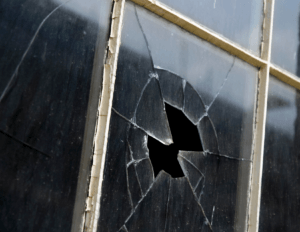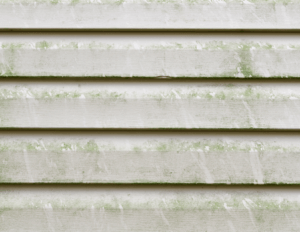As a homeowner, maintaining the structural integrity and appearance of your property is essential. Over time, windows and siding can wear out due to weather exposure, age, and wear and tear. Recognizing the signs that indicate the need for window and siding replacement can save you from potential damage, higher energy bills, and costly repairs down the road. In this blog, we’ll explore some key indicators that will help you determine when it’s time for window and siding replacement.
Visible Signs of Damage

The most apparent indication that you need window and siding replacement is visible damage. Check your windows and siding for cracks, chips, warping, or peeling paint. Damaged windows and siding not only compromise your home’s curb appeal but also leave it susceptible to water infiltration and energy loss. Promptly replacing damaged windows and siding can prevent further deterioration and maintain the structural integrity of your home.
High Energy Bills
If you notice a sudden increase in your energy bills, your windows and siding may be to blame. Old or poorly insulated windows and siding allow air leakage, leading to drafts and temperature fluctuations inside your home. Upgrading to energy-efficient windows and properly insulated siding can significantly reduce energy consumption and make your home more comfortable year-round.
Difficulty Opening, Closing, or Locking Windows
If you find it challenging to open, close, or lock your windows, it’s a sign that they are no longer functioning correctly. This problem is common in older windows with worn-out hardware or damaged frames. Faulty windows not only compromise your home’s security but also hinder proper ventilation. Consider window replacement to enhance functionality and security.
Condensation Between Window Panes
Condensation between double or triple-pane windows is a clear indication of seal failure. When the seal is compromised, moisture gets trapped between the panes, obstructing your view and reducing the window’s insulating properties. Foggy windows not only look unattractive but also decrease energy efficiency. In such cases, it’s best to invest in new, properly sealed windows.
Fading or Discoloration of Siding
Over time, exposure to the sun’s UV rays can cause siding to fade or become discolored. Faded siding not only impacts your home’s aesthetics but may also indicate that the siding material is deteriorating. If your siding has lost its vibrant color or shows signs of wear, it’s time to consider siding replacement.
Mold or Mildew Growth

The presence of mold or mildew on your siding is a serious concern. Mold growth often indicates moisture issues, and if left unaddressed, it can lead to structural damage and potential health risks for your family. Properly installed and maintained siding should act as a barrier against moisture, preventing mold growth. If you spot mold or mildew on your siding, it’s essential to address the problem promptly and consider siding replacement if needed.
Exterior Noise and Drafts
Old or damaged windows and siding may allow exterior noise to penetrate into your home. Additionally, drafts near your windows or doors indicate that your home is not properly insulated, leading to discomfort and higher energy bills. Upgrading to modern, energy-efficient windows and replacing old siding can significantly reduce external noise and create a more comfortable living environment.
Outdated Design and Style
If your windows and siding have an outdated design or style that doesn’t align with your home’s aesthetics, it might be time for an upgrade. Upgrading to newer, visually appealing windows and siding can boost your home’s curb appeal and potentially increase its resale value.
Rotting or Warping Siding
Inspect your siding regularly for signs of rot or warping, especially if you have wood siding. Rotting or warped siding is a clear indicator of water damage and can compromise the structural integrity of your home. Moisture can seep into the siding material, leading to decay, mold growth, and even attracting pests. If you notice any sections of your siding that are soft to the touch or have visible signs of rot, it’s crucial to address the issue promptly with siding replacement.
Single-Pane Windows
If your home still has single-pane windows, it’s time to consider an upgrade. Single-pane windows offer minimal insulation and energy efficiency compared to modern double or triple-pane windows with insulating gas fills. Upgrading to energy-efficient windows can lead to significant savings on your heating and cooling costs while improving your home’s comfort.
Siding Fails Inspection
If you’re planning to sell your home or are required to pass a housing inspection, outdated or damaged siding may not meet the standards. Faulty siding can become a deal-breaker for potential buyers and result in delays or price reductions. Investing in new siding can increase the market value of your home and make it more attractive to potential buyers.
Increased Noise from Outside
If you find that outdoor noises are becoming increasingly bothersome, it might be a sign that your windows are not effectively blocking sound. Modern windows with multiple layers of glass and insulating properties can significantly reduce exterior noise, creating a quieter and more peaceful living environment.
Drafty Spaces Near Windows
Feeling cold drafts near your windows, especially during colder months, indicates poor insulation and air leakage. Drafts can make your home uncomfortable and lead to higher heating costs. Replacing old windows with energy-efficient ones can prevent drafts and keep your home consistently comfortable throughout the year.
Pest Infestation
Damaged or deteriorating siding can provide entry points for pests like insects, rodents, and termites. If you notice signs of pest infestation or find pests entering your home through gaps in your siding, it’s essential to address the issue and consider siding replacement to prevent further pest-related damage.
Increased Allergy Symptoms
Old or damaged windows may not effectively keep allergens, dust, and pollutants out of your home, leading to increased allergy symptoms for you and your family. Upgrading to windows with advanced air filtration and insulation can significantly improve indoor air quality and reduce allergy triggers.
Siding Fades Unevenly
Uneven fading of your siding indicates that some areas are more exposed to the elements than others. This could be due to inadequate weather resistance or sun exposure. New siding with better UV protection will ensure a uniform appearance and protect your home from weather-related damage.
Warmer Areas Near Windows
During hot weather, if you notice certain areas near your windows feeling significantly warmer than others, it may be a sign of heat transfer. Energy-efficient windows can prevent solar heat gain, keeping your home cooler and more comfortable in the summer.
Peeling Paint on Siding
Peeling paint on your siding can be a sign of water infiltration, which can lead to extensive damage if left unchecked. Properly installed and maintained siding should protect your home from moisture-related issues. If you notice peeling paint or bubbling on your siding, consider replacing it with a more durable and moisture-resistant material.
By being vigilant and attentive to these signs, you can make well-informed decisions regarding window and siding replacement. Upgrading to energy-efficient windows and durable, modern siding not only improves your home’s appearance but also enhances its overall performance and comfort. Don’t hesitate to consult with Semper Fi, a professional window and siding contractor, to assess your specific needs and ensure a successful replacement project that will benefit your home for years to come.
